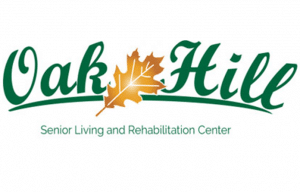Docs talk colds, flu, boosters
In a press briefing by the St. Louis Metropolitan Pandemic Task Force, the future of COVID in the United States was painted as uncertain.
But while COVID-19 hospitalizations remain low, other illnesses are making their presence known, local health officials said.
Monroe County Health Department Administrator John Wagner said compared to other COVID years, non-COVID illnesses are more prevalent this spring.
“The hospital has seen an increase in flu activity, strep throat, common colds and other cases of pneumonia compared to what we were seeing during high COVID activity times,” said Dr. Amy Rohlfing, Chief Medical Officer at Red Bud Regional Hospital.
Non-COVID illnesses are also cropping up in kids, said Dr. Ginny Peter of Heart to Heart Pediatrics in Waterloo. She shared that her office is currently seeing Influenza A (flu) and respiratory viruses, such as colds, in larger quantities than were seen last year.
At this time last year, masking was commonplace in many areas, and social distancing was expected. Many took precautions such as limiting gatherings, extra hand-washing and more. Now, mitigations are lifting and life is returning to normal – and so are typical illnesses.
Dr. Farrin Manian, chair of the Department of Medicine and infectious disease physician at Mercy St. Louis, said last flu season was mild across the country. He witnessed somewhat of a surge in December in the St. Louis area, and within the last few weeks there’s been a “mild increase in Influenza A cases” in the region.
“I do believe that the universal masking that we had last year probably did have an impact – I don’t know if it was all of it – in terms of reducing (flu) cases,” Manian said. “People were not gathering, they were not coming to work like before, schools were out during periods of months even, so there was not a lot of opportunity for mingling and transmission of any respiratory virus essentially. Now that we’re opening things up, I think there’s definitely going to be more person-to-person contact, gatherings at indoor places where masks are not being worn. So it really does make sense that we’re going to provide a better opportunity for some of these viruses to be transmitted as we start to go back to our normal lives.”
The Monroe County Health Department has also been fielding calls regarding the U.S. Food and Drug Administration’s recent authorization of a second COVID booster for select populations, Wagner said.
Those eligible for a second booster dose of the Pfizer or Moderna COVID-19 vaccine are those 50 years and above, and people 12 and above with “moderate to severe” conditions that compromise their immune systems.
Both groups are recommended to wait at least four months after their first booster before getting the second.
The local health department is offering second booster doses, but said those who are ages 12-49 and immunocompromised must provide a note from their doctor stating they meet the criteria.
Manian explained why boosters are recommended for individuals 50 and above.
“There is a relatively high frequency of having co-existing conditions that put you at a high risk of complications from COVID. For example, obesity, diabetes, kidney or liver disease, malignancies,” Manian said.
Others are wondering if they need to get a booster if they had recently been infected with COVID-19, hoping their natural immunity will be enough to fend off future infection.
Manian said that each individual’s natural response differs from that of others, and so the best bet is for individuals to seek the second booster as soon as they can after they recover from their infection.
Reports and images surfacing from parts of the world hit hard by the BA.2 subvariant are causing many to wonder if the U.S. will see another surge – either caused by this subvariant or one that has yet to be discovered.
“It may mean that we’ll see another uptick in cases here in the U.S.,” Dr. Clay Dunagan, task force co-leader and chief clinical officer for BJC, said. “We can’t predict exactly if, when or how this is going to happen, and we can’t tell how it will affect hospitalizations, which is a key data point.”
Some are concerned that if they get their second booster now, their immunity could wane by the time a large surge rolls around. Manian said while there is no way to tell exactly when a surge will occur, the virus still poses a very real threat that people need to protect themselves from now.
“I think it’s really important to point out that COVID has not gone away. We still have people in the hospital with COVID, we still have people who are dying of COVID, we still have a considerable amount of transmission in the community – people are still being diagnosed out there – so it’s not like the risk is zero,” Manian said. “For all of us who are maybe less than immune to it at this time, I think having a booster really makes sense because we’re still trying to protect ourselves against a virus that is still going around.”
Monday task force data showed 82 COVID-positive individuals were patients in St. Louis area hospitals, and 12 COVID-positive patients were in the ICU. Of these 12, 10 required ventilators.
The task force includes hospitals within the BJC HealthCare, Mercy, SSM Health, St. Luke’s Hospital and local U.S. Department of Veterans Affairs systems.
Of those hospitalized, roughly 60 percent are unvaccinated, data showed.
Throughout the month of April, the Monroe County Health Department will offer Moderna (18 and older), Pfizer (12 and older) and the pediatric Pfizer vaccine (ages 5-11) from 9 a.m. to 3:45 p.m. Monday through Friday at its office, 1315 Jamie Lane in Waterloo.
The office is closed between noon and 1 p.m. for lunch.
The clinics will offer first dose, second dose and both boosters. Appointments are recommended and can be made by calling or texting 618-612-6695.
As of Tuesday, Illinois Department of Public Health data showed just over 61 percent of Monroe County’s eligible population is fully vaccinated (two doses of Pfizer, two doses of Moderna or one dose of Johnson & Johnson) and 10,807 booster doses had been administered.
In addition to being vaccinated, Dunagan highlighted other preventative measures one can take.
He recommends those who are immunocompromised continue masking and that others wear masks when around somebody who is immunocompromised. When deciding whether to attend large gatherings, one should weigh the benefits against the risk of catching COVID, he said.
“It’s within our power to make this next wave less severe and to prevent a variant from disrupting our lives again,” Dunagan said.






